6 Things You Must Know Before Installing a Fence
When the groundhog tests the weather in early February, it’s time to start thinking about the rotting fence you never got around to replacing.

Photo via Bluestar Gardens
When the groundhog tests the weather in early February, it’s time to start thinking about the rotting fence you never got around to replacing. Fencing comes in a wide variety of styles and materials, not to mention price ranges, from premade fence panels on the low end to custom Ipe horizontal fencing on the high end.
Here are six things to consider if you’re mulling a new fence:
1. Ipe Is Durable (and Pricey).
“About 85 percent of the fencing we build is horizontal plank, generally with a six-foot-tall fence, which is the legal max,” said Al Terry of New York Decks. “Far and away, ipe is the most durable. When our clients have the resources, they want to build a fence that’s going to be there for 30 years.”
Because ipe is an extremely dense wood, it is virtually rot proof, fire resistant and impervious to animal and insect damage. A high-quality custom ipe fence in a 20-by-30-foot backyard costs about $24,000 and takes two weeks to build, Terry said.
Less expensive options include pressurized wood, which is treated with chemicals to deter insects, and knotty cedar. Another option, clear cedar, which doesn’t have the imperfections or blemishes of knotty cedar, is comparable to the cost of ipe.
“Clear cedar is almost four times as much as knotty cedar,” said Sasha Newman of Little Miracles Designs. “Knotty means some imperfections and knots but you can buy inexpensive material and stain it a solid color. That way you get the same look and you save money.”
If left untreated, cedar will begin to look gray and weathered, so Newman recommends a clear or solid color stain. But some prefer the look of aged cedar.
“Cedar ages to be a really beautiful grayish color,” said Martha Lazar of Bluestar Gardens. “The color that it ages to is really desirable.”
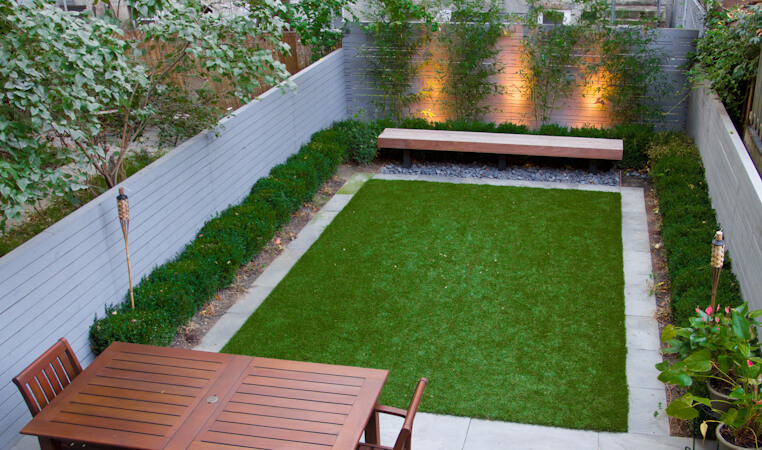
2. Cedar Has Jumped in Price.
The price of clear cedar has gone up about 40 percent since 2017 because of a new tariff President Trump has placed on lumber from Canada. “People who got quotes a year ago and are now ready to start building a fence are seeing a 40 percent increase in their quotes,” said a Park Slope homeowner who recently priced out fencing.
Prices vary depending on the installer and other factors.
All other things being equal, a cedar fence runs $25 per square foot, Ipe is $32 per square foot and pressure treated wood is about $22, Lazar tells her clients.
“That is for a yard that is graded and cleared,” she added.
At these prices, a fence built of pressure-treated wood covering three sides of a 20-by-30-foot yard would run about $1,760.
3. Prep Work May Be Required.
If your backyard — or your neighbor’s backyard close to the property line — isn’t flat, you may need to regrade some areas or do some structural work to shore up stretches prone to erosion before you can put in a fence.
Trees on the property line or with roots growing into the fencing areas may need to be removed. All of these will add to the cost.
“Every yard is different,” said Lazar. “Some are filled with debris and weedy trees that need to be removed, while others just need a replacement fence and upgraded garden.”
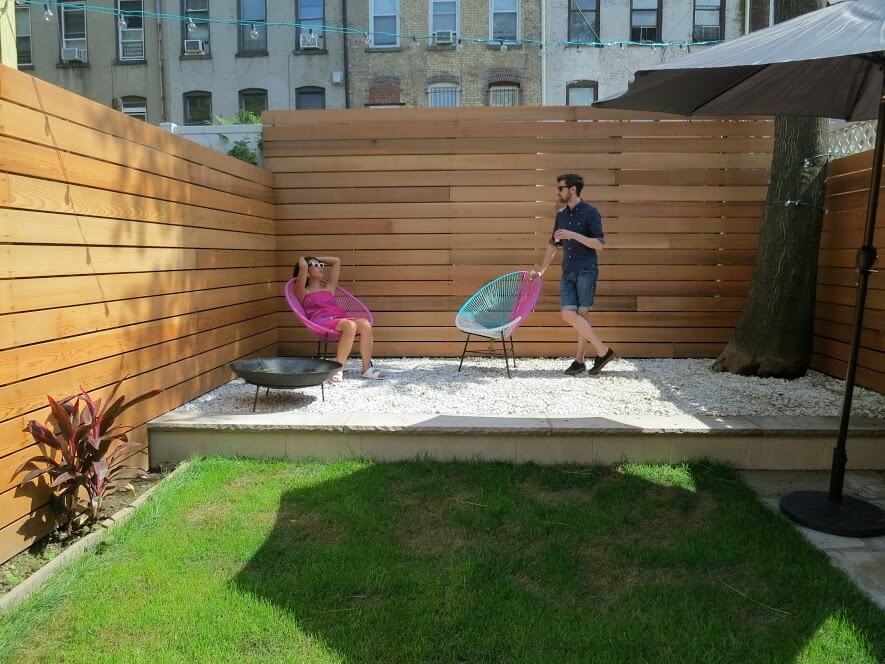
4. The Horizontal Fence Rules.
When it comes to style, horizontal plank fences have replaced the vertical and picket fencing of yesteryear.
“Stylistically, it’s only horizontal,” Newman said. “Everybody’s going horizontal. Everything pre-fab is always going to be vertical and everything custom made is going to be horizontal.”
Horizontal planks can be spaced close together, with an eighth-inch gap between them, for privacy, or with a quarter-inch to 1-inch opening between them for a light, open feel.
Some clients opt for a solid panel with an opening on top, Terry said.
“A lot of Ipe fences are five feet of solid fence and on the top 6 to 12 inches of open screen,” Terry said. “It lets in more light but generally it’s for aesthetics.”
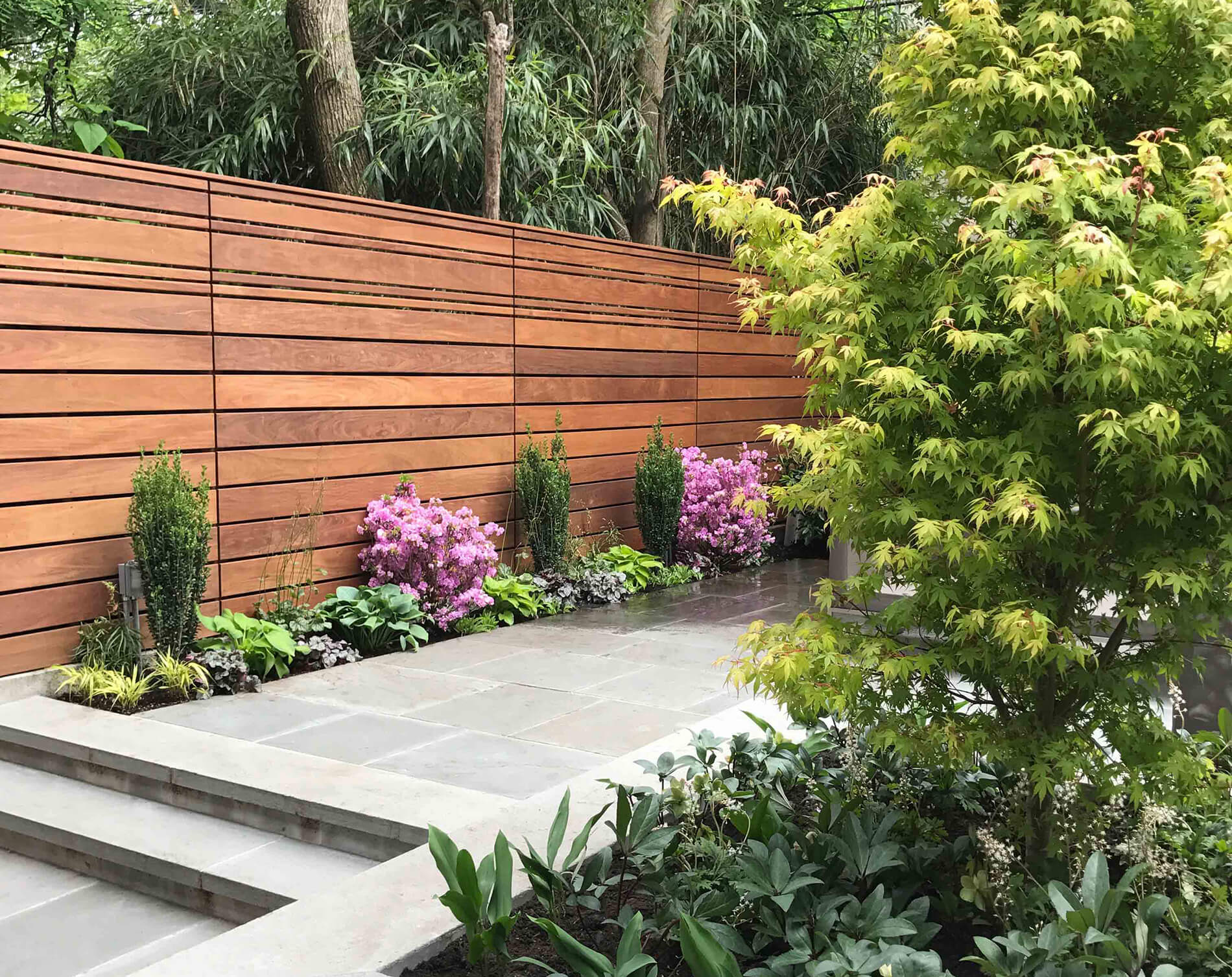
5. Fencing Won’t Fix Your Mosquito Problem.
A solid-panel fence with an opening on top will create privacy while also allowing light and air.
But no matter what type of fence you choose, it’s unlikely to have much of an impact on mosquitos, according to Lazar.
“There has to be a constant breeze, no moisture anywhere nearby,” to nix mosquitos, she said. “Fencing would have no bearing on the mosquito population.”
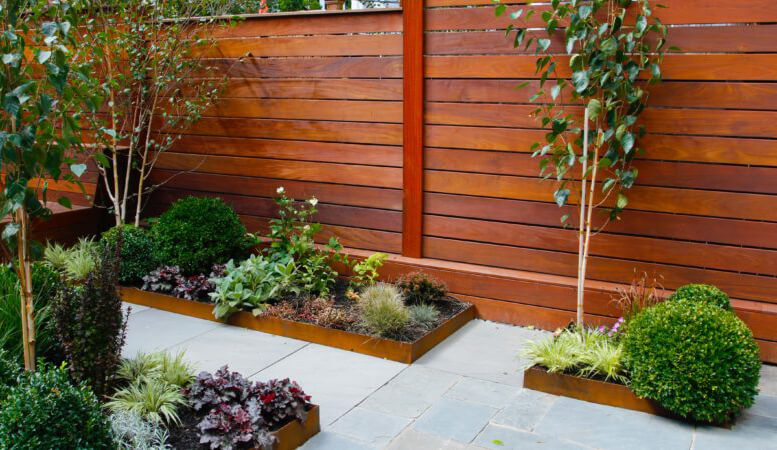
6. Talk to Your Neighbors.
Before building a new fence, homeowners must tackle the delicate issue of the neighbors. In New York City, homeowners are not obliged to face the finished side of a fence toward the neighboring property, often resulting in two abutting fences.
“Very frequently, there are two fences back to back,” Newman said. “Usually people put fences on their property so they don’t have to answer to anyone. Very few people do joint fences that are the same on both sides.”
Terry said: “It’s probably one of the most delicate issues I’ve come across. I ask my clients if they have a survey of the property line because everything has to be kept inside the property line, especially if the neighbor has an objection.”
“On occasion, clients will split the cost and it is finished on both sides, but it’s infrequent,” Terry said. “It’s good to confer. I recommend that my clients talk to their neighbors and tell them what we’re going to do.”
Businesses Mentioned Above
[blankslate_pages id=”d56f9671e782c4, d58b8634e770c1, d5399ea8d60151″ type=”card” show_photo=”true” utm_content=””][/blankslate_pages]
Related Stories
- Brooklyn Designer Rebecca Atwood Takes Inspiration From Nature
- Living Green Walls of Plants Refresh Brooklyn Homes
- Clever Disguises for Ugly Garbage Cans Boost Curb Appeal in Brooklyn Front Yards
Email tips@brownstoner.com with further comments, questions or tips. Follow Brownstoner on Twitter and Instagram, and like us on Facebook.

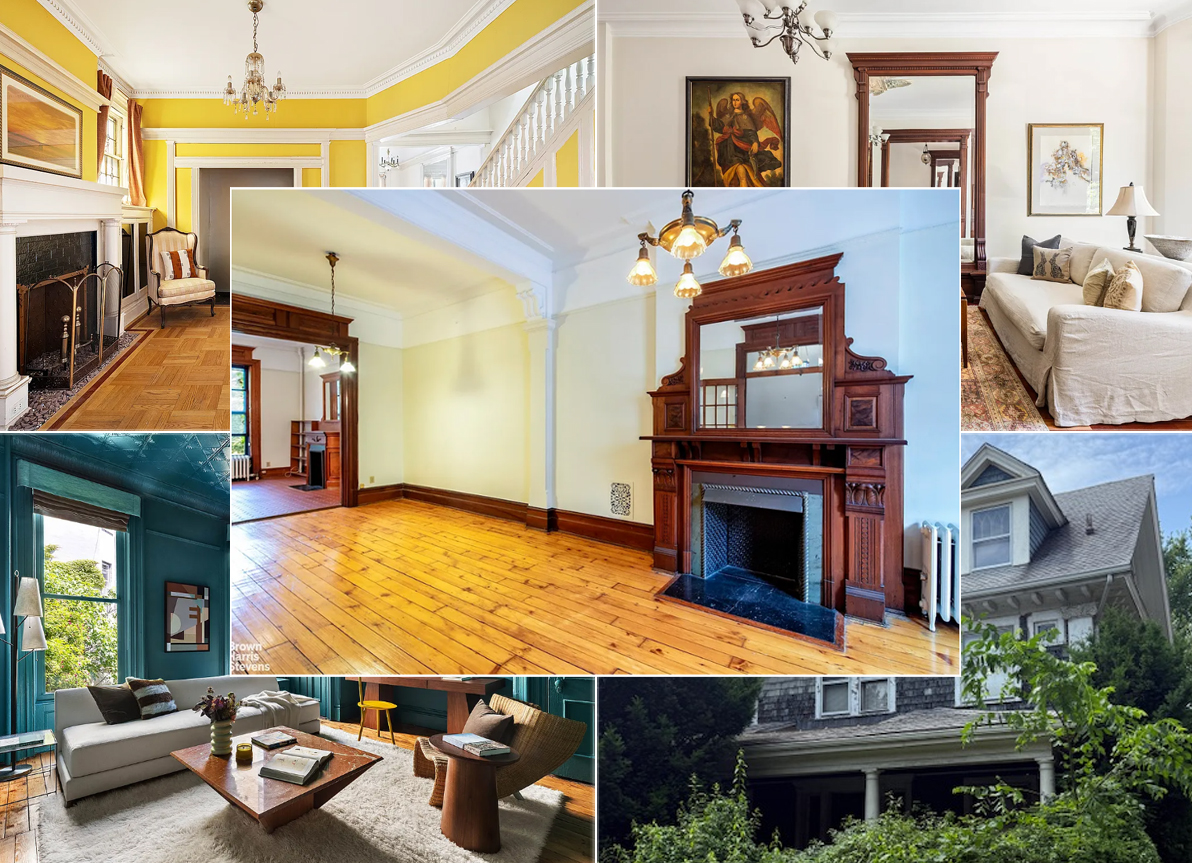



What's Your Take? Leave a Comment